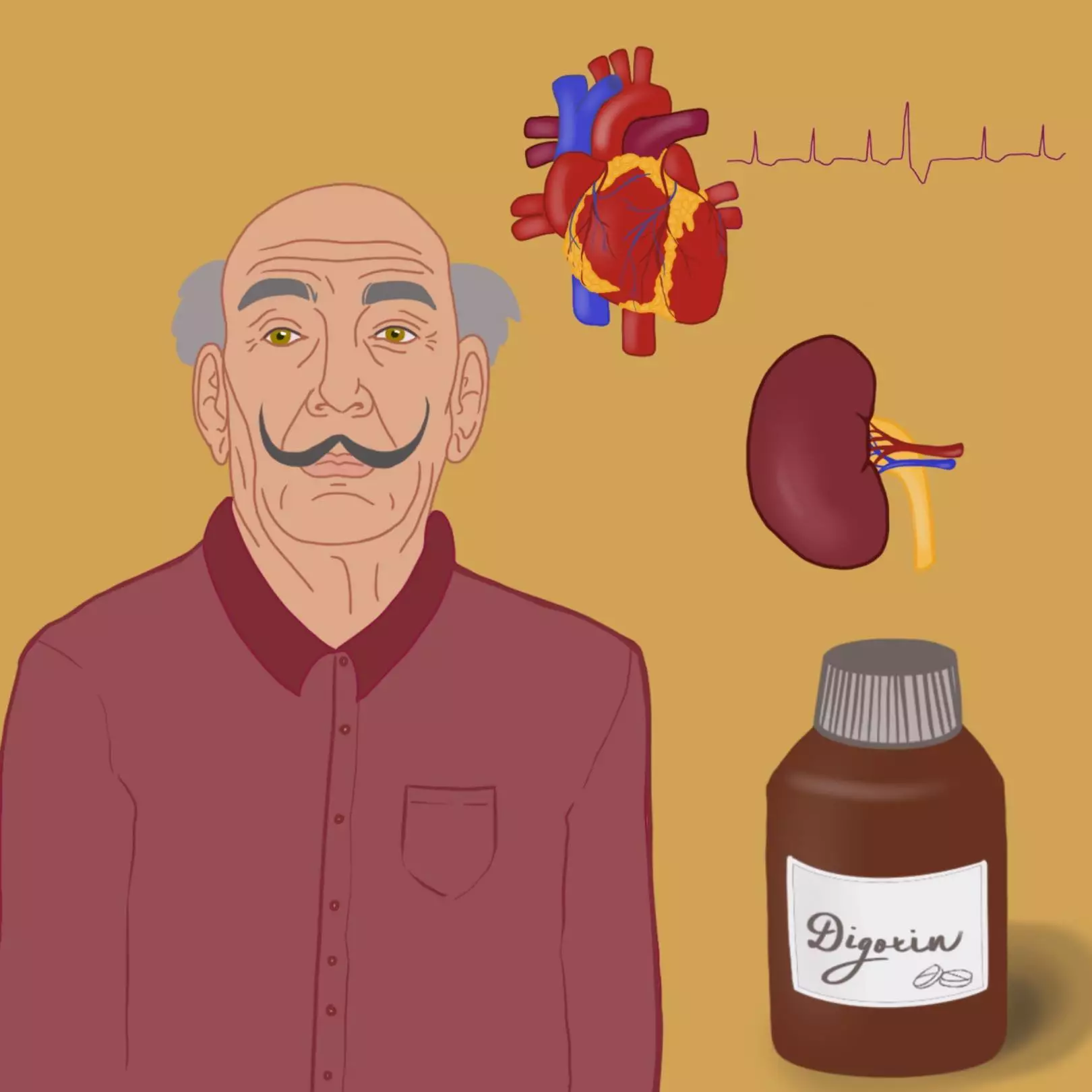Digoxin intoxication
Digoxin is a medication often prescribed to treat heart failure and certain heart rhythm disorders. However, taking too much digoxin, kidney failure, or interactions with other medications can lead to a potentially life-threatening condition called digitalis intoxication. In this algorithm, we will discuss the symptoms of digoxin poisoning in both chronic and acute intoxication, and targeted as well as symptomatic treatment options.
Review
Digoxin is still a widely used antiarrhythmic drug, especially in elderly patients with heart failure and atrial fibrillation. Especially in this group, renal insufficiency is a frequent comorbidity. And it is the coincidence with renal insufficiency that is a major risk factor for digoxin overdose. Unfortunately, the outpatient possibility of measuring its level as a way of monitoring optimally guided therapy is often neglected. It is only when an overdose is suspected during hospitalization, and with already developed bradycardia, that levels are then determined. Also, digestive distress, as one of the first signs of digitalis toxicity, is often overlooked (especially in elderly and polymorbid patients).
The algorithm recalls not only the mechanism of action and its limitations, but also the manifestations of overdose and the subsequent possibility of specific therapy.
Sources
LEVINE, M. D. a A. O'CONNOR. Digitalis (cardiac glycoside) poisoning. UpToDate [online]. 2022 [cit. 2023-04-02]. Dostupné z: https://www.uptodate.com/contents/digitalis-cardiac-glycoside-poisoning
FARKAS, Josh. Cardiac glycoside poisoning (including digoxin). EMCrit [online]. 2021 [cit. 2023-04-02]. Dostupné z: https://emcrit.org/ibcc/dig/
PINCUS, Matthew. Management of digoxin toxicity. Australian Prescriber [online]. 2016, 39(1), 18-20 [cit. 2023-04-02]. ISSN 18393942. Dostupné z: doi:10.18773/austprescr.2016.006
Digoxin toxicity. In: Wikipedia: the free encyclopedia [online]. San Francisco (CA): Wikimedia Foundation, 2001- [cit. 2023-04-02]. Dostupné z: https://en.wikipedia.org/wiki/Digoxin_toxicity
CUMMINGS, Earl D. a Henry D. SWOBODA. Digoxin Toxicity. National Library of Medicine [online]. 2023 [cit. 2023-04-02]. Dostupné z: https://www.ncbi.nlm.nih.gov/books/NBK470568/
SEDLOŇ, Pavel a Ilja KOTÍK. Digoxin a jeho užití na počátku dvacátého prvního století. Interní medicína [online]. Solen, 2002 [cit. 2023-04-02]. Dostupné z: https://www.internimedicina.cz/pdfs/int/2002/03/07.pdf
Learning targets
2. The student will recognize acute and chronic digoxin intoxication
3. The student knows the targeted and symptomatic treatment of digoxin intoxication
4. The student understands the mechanism of action of digoxin on cardiomyocytes and its pharmacodynamics
Key points
2. Digoxin is a large molecule with a large volume of distribution and therefore cannot be removed by haemodialysis.
3. The most effective treatment is the administration of Digitalis antidote, the indications are hemodynamic instability of the patient, the presence of significant dysrhythmia and hyperkalemia above 5 mmol/l."





